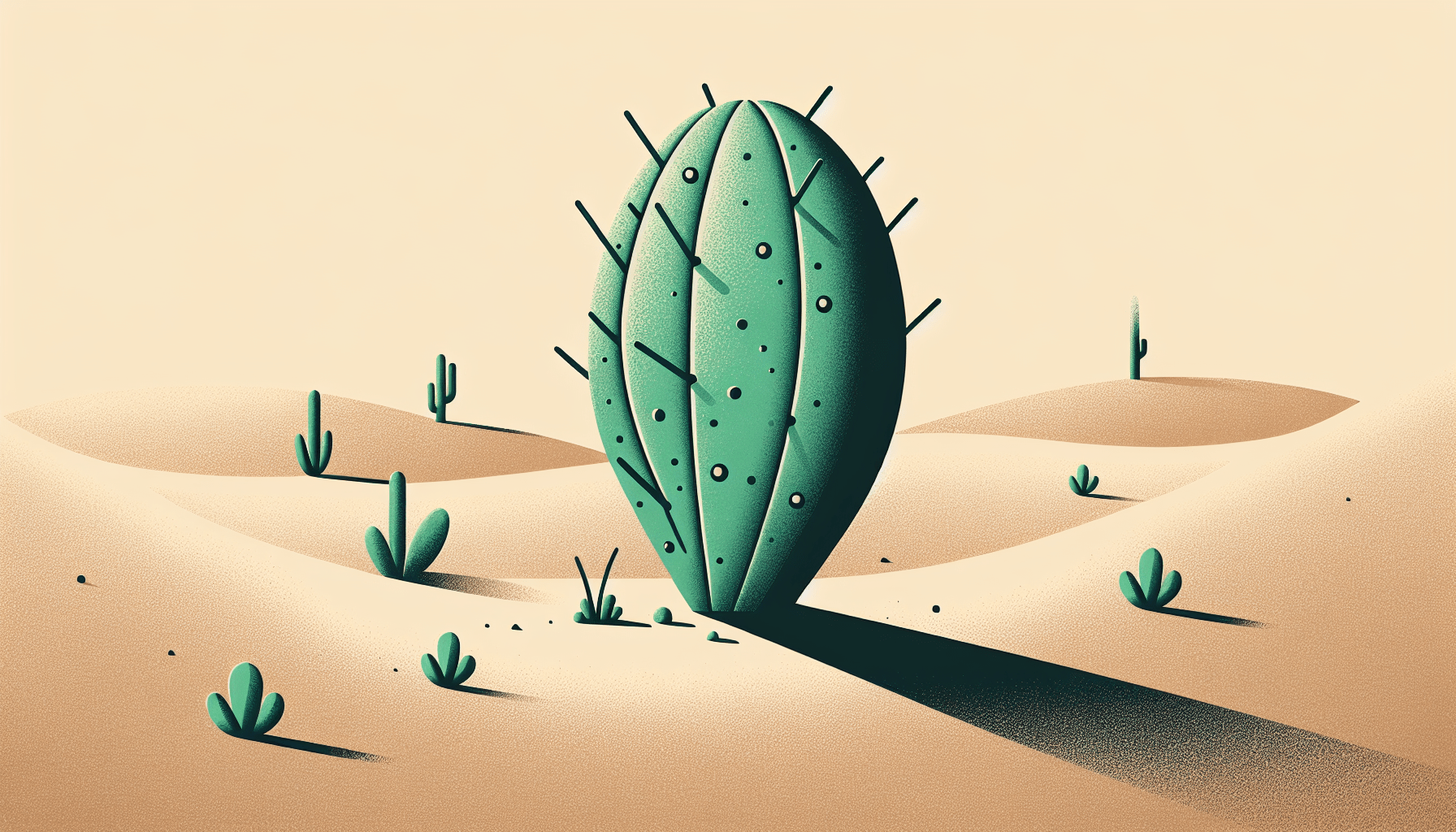Have you ever marveled at the unique beauty and resilience of the Nopal cactus? Its rich green pads crowned with festive pink and red flowers make it a sought-after plant in gardens and landscapes around the world. But as alluring as it is, this hardy species can quickly become a troublesome invader if not managed properly. How do you strike a balance between enjoying the benefits of the Nopal cactus and preventing it from overtaking your landscape or ecosystem?
Welcome to a friendly guide on how to prevent the Nopal cactus from becoming invasive. Through understanding its nature, growth patterns, and potential impact, you can savor its natural beauty without letting it get out of hand.
Understanding Nopal Cactus
What is Nopal Cactus?
Nopal cactus, also known as prickly pear, belongs to the genus Opuntia. It’s a staple in both culinary dishes and traditional medicine, valued for its edible pads and nutritious fruit. Its adaptability to a wide range of environmental conditions makes it a popular choice among gardeners and landscapers who appreciate low-maintenance and drought-tolerant plants.
Native Regions and Adaptability
Nopal cactus is native to the Americas, thriving particularly well in arid and semi-arid environments. Its ability to store water in its pads helps it survive harsh conditions. This adaptability has contributed to its spread beyond its native regions, particularly in areas with climates similar to its original habitats.
Ecological Impact of Invasion
While the Nopal cactus plays an essential role in its native ecosystem by providing food and shelter for wildlife, it can become invasive when introduced to non-native regions. When left unchecked, it has the potential to outcompete local flora, alter habitats, and disrupt ecosystems, leading to biodiversity loss.
Identifying Invasive Behavior
Growth Patterns and Reproduction
Nopal cactus reproduces not only through its seeds but also vegetatively. Broken pads can easily root and grow into new plants. This means that even minor disturbances or mismanagement can lead to rapid and uncontrolled spread.
Signs of Invasive Spread
Watching out for signs of invasive growth is key in managing Nopal cactus. Look for dense clusters forming quickly in areas where the cactus was initially sparse. An unusual and rapid increase in plant numbers and coverage, especially in disturbed areas, can indicate a progression from thriving to invasive.
Ecological and Economic Consequences
Invasive Nopal cactus can dominate landscapes, reducing land value and usability, and interfere with agricultural activities. Its spines and glochids pose hazards to livestock and humans, further complicating land management.

Preventive Strategies
Site Assessment and Selection
Before planting Nopal cactus, assess your site for appropriateness. Evaluate soil type, climate compatibility, and proximity to areas where unchecked growth could cause problems. Avoid planting near areas prone to disturbance, such as pathways or properties that may facilitate spread.
Use of Barriers
Installing physical barriers such as root barriers or planting in containers can restrict the spread of Nopal cactus. These barriers prevent the roots from expanding beyond a designated area, helping control its growth and spread.
Regular Monitoring and Maintenance
Conduct regular checks on your Nopal cactus to ensure it is not spreading beyond its intended area. Remove any new growths that appear outside your designated area immediately. This proactive maintenance prevents small issues from becoming larger problems.
Responsible Disposal
When pruning or removing Nopal cactus pads, make sure you dispose of them responsibly. Since they can propagate easily, leaving them lying around can inadvertently lead to further spread. Use a designated compost or disposal system that can handle invasive plant material safely.
Community Involvement
Education and Awareness
Informing your local community about the potential risks of Nopal cactus becoming invasive can help in controlling its spread. Share tips and insights you gather, encouraging shared practices that benefit everyone in the area.
Cooperative Management
Consider grouping with local gardeners, landowners, and environmental groups to manage Nopal cactus collectively. Community-led initiatives can provide more comprehensive monitoring and response strategies to prevent or mitigate the cactus’s invasive impact.

Environmental and Legal Considerations
Understanding Local Regulations
Familiarize yourself with local laws and regulations regarding Nopal cactus. Some regions may have specific guidelines or restrictions about planting and managing potentially invasive species. Compliance not only helps you stay on the right side of the law but also supports regional efforts to conserve biodiversity.
Environmental Impact Assessments
Before planting, explore whether your region recommends or mandates environmental impact assessments for species like Nopal cactus. These assessments help predict potential ecological impact and guide decision-making.
Benefits of Non-Invasive Nopal Cactus
Culinary and Medicinal Uses
When responsibly managed, Nopal cactus can be a valuable resource. Its pads, known as nopales, are edible and can be used in various dishes. The fruit, called tunas, is also consumed and holds nutritional benefits. Moreover, Nopal cactus has traditional medicinal applications, valued for its potential health benefits, including anti-inflammatory properties.
Landscaping Appeal
In landscapes, Nopal cactus offers aesthetic appeal and functional benefits, such as erosion control and serving as a natural barrier. Its colorful flowers and hardy nature provide year-round interest to gardens and landscapes.

Creating a Balanced Ecosystem
Integrative Landscaping Practices
Implement landscaping practices that balance ornamental and environmental value. Incorporate diverse plantings that include native species alongside Nopal cactus, promoting a healthy, balanced ecosystem where non-native plants do not overwhelm indigenous flora.
Monitoring Biodiversity
Pay attention to the biodiversity in your landscape. A healthy ecosystem will sustain a variety of plant and animal species. Regular monitoring assists in detecting imbalances early, allowing for prompt adjustments.
Nopal Cactus and Wildlife
Interaction with Native Wildlife
Nopal cactus provides food and habitat for a variety of wildlife in its native ranges, such as pollinators, birds, and insects. Encourage these native interactions that are beneficial without allowing the plant to dominate the landscape.
Control Measures Friendly to Wildlife
If control measures become necessary, choose methods that are environmentally friendly and sensitive to local wildlife. Avoid chemical controls that might harm beneficial organisms and opt for manual or mechanical removal when possible.

Conclusion
Preventing the Nopal cactus from becoming invasive requires understanding its nature and keeping a keen eye on its growth. With a little planning and vigilance, you can enjoy all the benefits this remarkable plant offers while maintaining ecological harmony. Equip yourself with these strategies and cultivate a landscape that’s both beautiful and sustainable. Remember, your actions have the potential to inspire others, leading to collective efforts towards responsible and thoughtful plant management.

